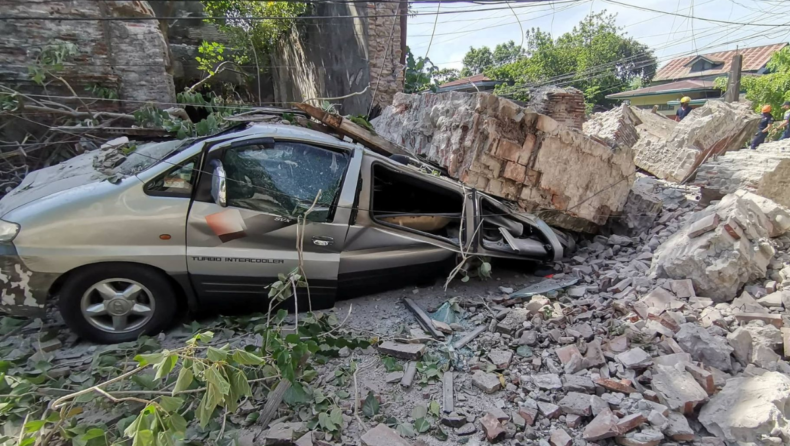After the earthquake, more than 800 shockwaves are recorded. Out of which, 24 were strong enough to feel. Fearing further earthquakes, residents slept outside their homes.

Philippines- One of the world’s most natural hazard-prone countries:
Due to its location on the Pacific Ring of Fire, the Philippines regularly witnesses quakes. The intense seismic activity stretches from Japan via Southeast Asia and across the basin of the Pacific.
Major reasons for earthquakes in the Philippines: warm ocean waters, deforestation, underdevelopment, coastal homes, and the Ring of fire.
Due to increased population, changing land-use patterns, unplanned urbanization, migration, global climate change, and environmental degradation, the economic cost of natural disasters is increasing.
The recent earthquakes:
After the 7.1 magnitude earthquake in the northern Philippines, five deaths were reported.
According to Local media reports, the quake left behind a trail of destruction in the Bangued town of Abra province. It is just 11 km away from the epicenter. The locals camped out on the sidewalks and in the parks.
The quake’s intensity was very high. Even in Manila, the capital, which is more than 300 km away, the buildings toppled and the high-rise towers shook.
Ferdinand Marcos on recent earthquakes:
Ferdinand Marcos, the Philippines President, on Wednesday, stated that the government has they have anticipated the needs of the victims of this strong earthquake. Power and water supply are his main concerns.
He gave a word to help in rebuilding homes that are damaged by the powerful earthquake on the island of Luzon. As the aftershocks rattled in the area, the residents were seen camping out in parks and on the sidewalks.
After Macros was brief during his inspection trip of the damage, he told the officials:
“For the affected and victims, let us make sure we are ready to support them and give them all they need.”
Elma Sia, who works at a restaurant, recalled her fearful experience of witnessing such a powerful earthquake, as quoted by Reuters. She told:
“Everything was moving, our plates were breaking, our lights swaying. We were terrified. I could hear people shouting from a nearby McDonald’s restaurant, so people rushed outside to the plaza and started crying out of fear.”
The Epicenter in Abra province:
The center of the quake was near the Lagangilang town of Abra province. This province has 250,000 residents and is surrounded by mountains.
“This is a major earthquake. We expect strong aftershocks. The focus of attention is on Abra and nearby provinces. ” – Renato Solidum.
Renato Solidum is the director of the State Seismology Agency.

The governor of the Abra province, Joy Bernos said that aftershocks were felt every 15 minutes on a local tv news program.
A hospital in Abra partially collapsed after the quake. But local officials stated that no casualties were reported.
Luzon island:
Luzon island is the most populous and largest island in the Philippines. Luzon Island was the worst hit with strong tremors felt in Manila. Several deaths were reported as landslides followed in the north.
According to US Geological Survey, northern Luzon was hit by a 7.0 magnitude quake. Originally, the quake was designated with 7.1 magnitudes, before it was downgraded to 7.0.
According to Philippine National Disaster Risk Reduction and Management Center, the infrastructure damage is about $687 million and has impacted more than 21,000 people.
The infrastructural damage across northern Luzon included more than 400 homes, several hospitals and bridges, and dozens of schools.
In Vigan City, centuries-old structures, that were built during the Spanish colonial era suffered damage. Videos and pictures were shared on social media showing the city’s Bantay Bell Tower crumbling while spectators tried to flee.














